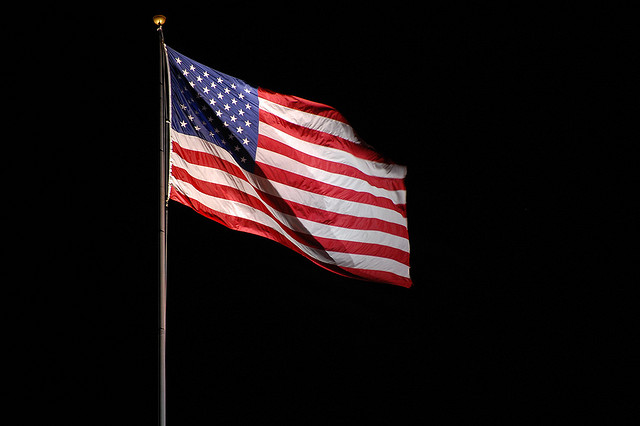Given the criminal justice system’s racist history, the failures of grand juries to indict Officer Darren Wilson and Officer Daniel Pantaleo are unsurprising and show the need for dismantling, not reforming.
BY REETU MODY
First a St. Louis grand jury failed to find enough evidence to indict Officer Darren Wilson for firing six shots that killed unarmed teenager Michael Brown last Monday night. Then, a grand jury in Staten Island failed to indict Officer Daniel Pantaleo for fatally choking Eric Garner. Both events reflect the racist history of the U.S. criminal justice system.
Statements across the political spectrum from Attorney General Eric Holder, President Barack Obama, former Representative Newt Gingrich, and New Jersey Governor Chris Christie suggest that there is seemingly bipartisan support for the view that our criminal justice system is broken. They say the criminal justice system is not working how we intended it to.
They’re wrong.
Our criminal justice system works exactly as designed. Its original purpose was to incarcerate poor men of color, which the criminal justice system does with painful intensity. Efforts to reform the criminal justice system focus on stopping wrongful convictions, changing drug policies, putting video cameras on police officers, and reducing sentences for crimes. These reforms are well intentioned and may help some communities. But the system remains designed to disenfranchise, harm, and incarcerate people of color. That must change.
First, the history: In But They All Come Back: Facing the Challenge of Prison Reentry (Urban Institute Press 2005), Jeremy Travis explains that the first prison, High Street Jail, was built in Philadelphia in 1682, with the intention of rehabilitating prisoners. In the pre-Civil War period, prisons were used to house primarily White prisoners (because the majority of Blacks were enslaved and punished by plantation owners). At the time, the criminal justice system dictated that prisoners who showed repentance through good behavior should be released. In addition, the state believed it should provide resources to support good behavior inside detention centers. Incarceration was once intended to prepare an individual to return to society ready to engage with social norms, not just to protect society from evils.
It wasn’t until after the Civil War, in the midst of Reconstruction—when for the first time Blacks had voting power and Southern White power felt threatened—that we saw our system change to its current punitive form. Following Reconstruction, our prisons transformed from places of rehabilitation to moneymaking institutions through the use of chain gangs, essentially a new form of slave labor. Freed slaves were charged with not fulfilling sharecropping commitments (which was almost never supported by evidence) and hired out as part of a prison chain gang to work fields, mines, or railroads. Today, labor exploitation continues as 37 states have legalized contracting out prison labor to private corporations. The criminal justice system became, and remains, a new way to ensure disenfranchisement of people of color by using them as cheap labor for the powerful. This new American ideology—that prisoners should be punished rather than rehabilitated—created the sturdy foundation for the labor exploitation of people of color and the status quo monopoly of political and economic power.
The 1960s and the Civil Rights Movement brought a second round of desegregation and political voting power to people in communities of color. The fear and threat from this “second Reconstruction” was the precursor to the War on Drugs. This “war” led to the most dramatic increase in the number of people incarcerated, disproportionately Black and Latino, in our country’s history with little discernible effect on drug usage.
Today when people speak of a broken criminal justice system, we ignore that our current criminal justice system was created to incarcerate Blacks, perpetuate systems of oppression, and maintain political disenfranchisement. Our system is not broken. It does all of that beautifully. Michelle Alexander, author of The New Jim Crow (The New Press 2012), revealed the connections between racial oppression and incarceration in a 2011 speech when saying that there are more Black men in prison now than were enslaved in 1850.
The statistics: Blacks and Latinos make up 58% of all prisoners yet only 25% of the American population. Despite similar drug usage rates across all communities and races, people of color are more likely to be prosecuted and receive harsher sentences for a drug-related crime. Prosecutorial and jury bias means that 1 in 3 Black men will spend time in prison. In addition, the Sentencing Project in the Criminal Justice Primer found that Blacks serve the same amount of time in federal prison for drug offenses (58.7 months) as Whites serve for violent offenses.
A racist criminal justice system purposefully harms communities of color and hurts all Americans. Researchers Christopher Lyons and Becky Pettit found a 21% lower wage return for formerly incarcerated people of color compared to that for formerly incarcerated Whites. Ex-offender laws deny individuals formerly incarcerated for felonies the right to vote, among other legal rights. All this criminal justice inequity concentrates poverty and disenfranchisement in communities of color.
Our criminal justice system continues to live up to its original purpose, racial oppression. And, reforming the criminal justice system enables us to maintain that system once based on, and still resulting in racially motivated disenfranchisement. Reform simply sanitizes the aspects of the system we do not want to see. We feel better, but the system is not better. To change the intention of racial oppression we need a completely different paradigm, such as a restorative justice model.
If we truly want a system reflecting this country’s value of justice, if we truly want less “collateral damage” in the form of violence, poverty, and family fragmentation, if we truly want a country built on racial equality, then we cannot simply reform the criminal justice system. We must dismantle it.

Photo credit
